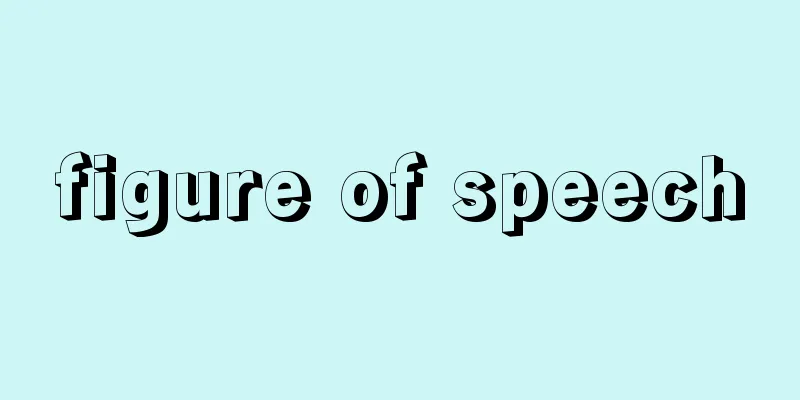Clubfoot - Inverted clubfoot

|
A deformity of the foot in which the foot is rotated inward around its long axis, which can be divided into congenital and acquired. The most common type is congenital clubfoot, while acquired clubfoot is caused by paralysis of the lower limbs, such as polio or cerebral palsy. [Takashi Nagai] Congenital clubfootA typical congenital deformity of the foot is clubfoot, which can be accompanied by pes adduction (a deformity in which the front half of the inner edge of the foot is in an inward position), pes equinus (a deformity of the foot in which the ankle joint is contracted into a plantar flexion position), and pes cavus (a deformity of the foot in which the medial longitudinal arch is more pronounced than normal). If left untreated, the child will walk with the outside of the foot on the ground. The cause is unknown, and there are theories that it is due to forced limb positioning in the womb and that it is hereditary. It is twice as common in boys as in girls. There are roughly equal numbers of bilateral and unilateral cases, and the right foot is slightly more common in unilateral cases. When viewed from the back of the lower leg at birth, the long axis and the axis of the calcaneus are not in a straight line, and the axis of the forefoot is displaced inward, and furthermore, pes equinus is seen, which is difficult to correct due to contracture, and is diagnosed. Immediate treatment immediately after birth is important, and the corrected position is easily achieved during the neonatal period, and the prognosis is naturally good. Treatment options include (1) manual correction and bandage fixation, (2) corrective plaster cast, (3) Dennis-Brown brace (a metal insole and a V-shaped metal bar) fixed with bandage, (4) corrective shoes and a nighttime orthotic, and (5) surgical treatment. It is necessary to closely monitor the progress until the child has finished growing, and the success of treatment often depends on the understanding and cooperation of the patient's family. [Takashi Nagai] [References] | |Source: Shogakukan Encyclopedia Nipponica About Encyclopedia Nipponica Information | Legend |
|
足の長軸を中心に内旋した状態の足の変形で、先天性と後天性とに分けられる。もっとも多くみられるのが先天性内反足で、後天性内反足にはポリオや脳性麻痺(まひ)など下肢の麻痺によるものがある。 [永井 隆] 先天性内反足代表的な足の先天変形で、内反足に伴って内転足(足の内縁前半部が内転位をとる足の変形)、尖足(せんそく)(足関節が底側屈曲位に拘縮した足の変形)、凹足(足の内側縦足弓が正常より著しい足の変形)がみられ、放置すると足部外側を接地して歩行するようになる。原因は不明で、胎内強制肢位などによるとする説や遺伝説などがある。男子は女子の2倍多くみられる。両側性と片側性がほぼ同数あり、片側性では右足のほうがわずかに多い。生下時に下腿(かたい)後方から見ると、長軸と踵骨(しょうこつ)の軸が一直線にならず前足部の軸が内方に転位し、さらに尖足がみられ、拘縮のため容易に矯正されないことで診断される。生後ただちに行う即時治療が重要視され、新生児期には矯正位が容易に獲得されるし、当然その予後も良好となる。治療法としては、〔1〕徒手矯正および絆創膏(ばんそうこう)固定法、〔2〕矯正ギプス法、〔3〕デニス‐ブラウン装具(金属製の足底板とV字形の金属バーからなる装具)の絆創膏固定法、〔4〕矯正靴および夜間矯正位保持装具の使用、〔5〕手術的治療法がある。なお、成長が終わるまで経過を十分に観察する必要があり、治療の成否は患児の家族の理解と協力に左右されることが多い。 [永井 隆] [参照項目] | |出典 小学館 日本大百科全書(ニッポニカ)日本大百科全書(ニッポニカ)について 情報 | 凡例 |
<<: Internal and external reviews - Internal and external reviews
>>: Internal combustion power generation
Recommend
Precession - Small motion
This is the phenomenon where, when a rigid body u...
Olein alcohol (English spelling) oleinal cohol
…Olein alcohol is also called olein alcohol. It i...
One-to-one correspondence - one-to-one correspondence
In two sets A and B, for each element a in A there...
Price on deck - Kanpan Watashi Nidan
… FOB is an abbreviation for free on board and is...
Dicentra peregrina; dicentra
A perennial plant of the Papaveraceae family, it i...
《The History of Canada》 - Kanada no Rekishi
…French Canadian historian. Inspired by the Durha...
ethnic group
...That is, it began with the discovery of the ph...
Amplitude shift keying
…There is also a method called vestigial sideband...
Kozu Ranch
This mountain ranch is located in the southwest o...
American soldier fly - American soldier fly
An insect of the Diptera family, Scorpionidae. It ...
Kaimur
…The northern part of the range slopes down to th...
Thread-Wap Friends
...In the Edo period, the Itowarifu Nakama, who w...
Isopleth - Isopleth (English spelling)
Isopleths are the contours of a function of two v...
Hairdressing salon - Kamiyudoko
〘noun〙① In the Edo period, a business that did hai...
Galyarusa - Galyarusa
The name of a place in Gar County, southwest of t...









